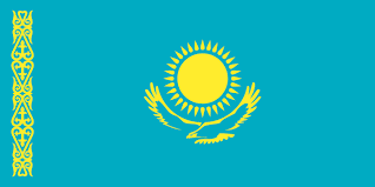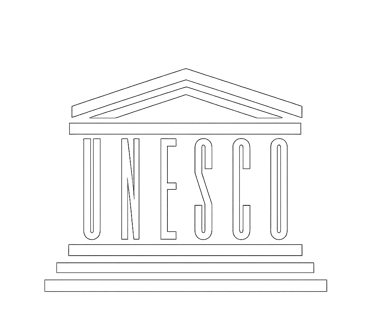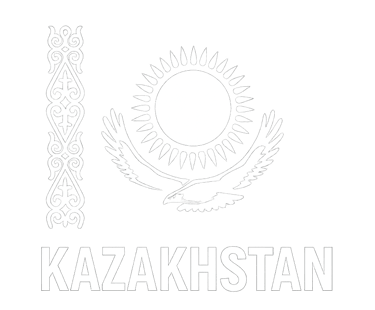Become KaZAKH
IT’S TIME TO
DIVE INTO A LIFESTYLE
From its early nomadic roots to the rise of the Kazakh Khanate in the 15th century, Kazakhstan has played a key role in the history of the Eurasian steppe. A land of vast landscapes and deep traditions, it has been shaped by Silk Road trade, Mongol conquests, and the legacies of the Russian and Soviet eras. Blending ancient customs with modern development, Kazakhstan’s culture reflects the resilience of its nomadic heritage alongside the innovations of a rapidly growing nation. From the golden domes of Turkistan’s mausoleums to the futuristic skyline of Astana, the country offers a fascinating journey through time.
Following its independence in 1991, Kazakhstan embarked on an ambitious path of political and economic reform, becoming Central Asia’s leading economy and a global hub for diplomacy and innovation. With a strong emphasis on education, technological progress, and cultural preservation, the country embraces both its rich past and its future as a modern Eurasian power. Today, Kazakhstan stands as a bridge between East and West, known for its hospitality, diverse landscapes, and unique blend of tradition and progress.
We have created a selection of cultural insights to help you immerse yourself in the real Kazakhstan—learning words and phrases that go beyond textbooks and bring you closer to the heart of Kazakh life.

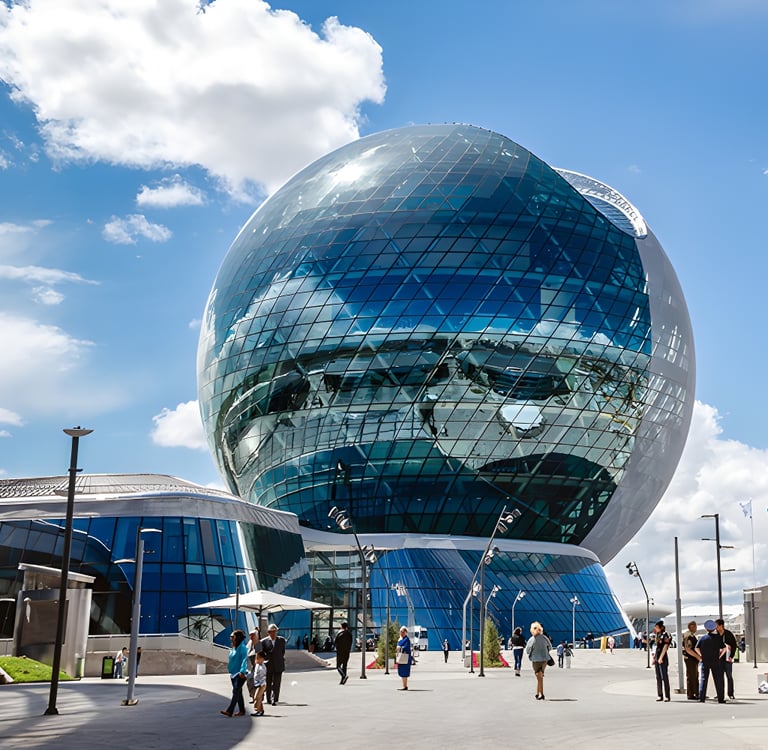

EXPAND YOUR KNOWLEDGE
If you are serious about learning Kazakh, we recommend that you download the Complete Kazakh Master Course.
You will receive all the information available on the website in a convenient portable digital format as well as additional contents: over 15.000 Vocabulary Words and Useful Phrases, in-depth explanations and exercises for all Grammar Rules, exclusive articles with Cultural Insights that you won't find in any other textbook so you can amaze your Kazakh friends thanks to your knowledge of their country and history.
With a one-time purchase you will also get hours of Podcasts to Practice your Kazakh listening skills as well as Dialogues with Exercises to achieve your own Master Certificate.
Start speaking Kazakh today!


APPLES
Kazakhstan is considered the birthplace of the алма (apple), with the city of Almaty deriving its name from this fruit. The wild Сиверс алмасы (Sivers apple), believed to be the ancestor of all modern apples, still grows in the country's mountainous regions. These forests are home to diverse apple varieties that have adapted to Kazakhstan’s unique climate. The алма бағы (apple orchards) in Almaty and its surroundings are famous for their high-quality produce, attracting visitors and researchers alike. Due to the region's fertile soil and favorable conditions, the cultivation of алма ағашы (apple trees) has flourished for centuries. Kazakhstan exports various apple species, with local farmers preserving traditional growing methods while integrating modern agricultural techniques. The қызыл алма (red apple) and жасыл алма (green apple) are among the most commonly grown varieties, offering a range of flavors from sweet to tart. Efforts to conserve wild apple forests continue, as they play a crucial role in genetic diversity and global apple production.
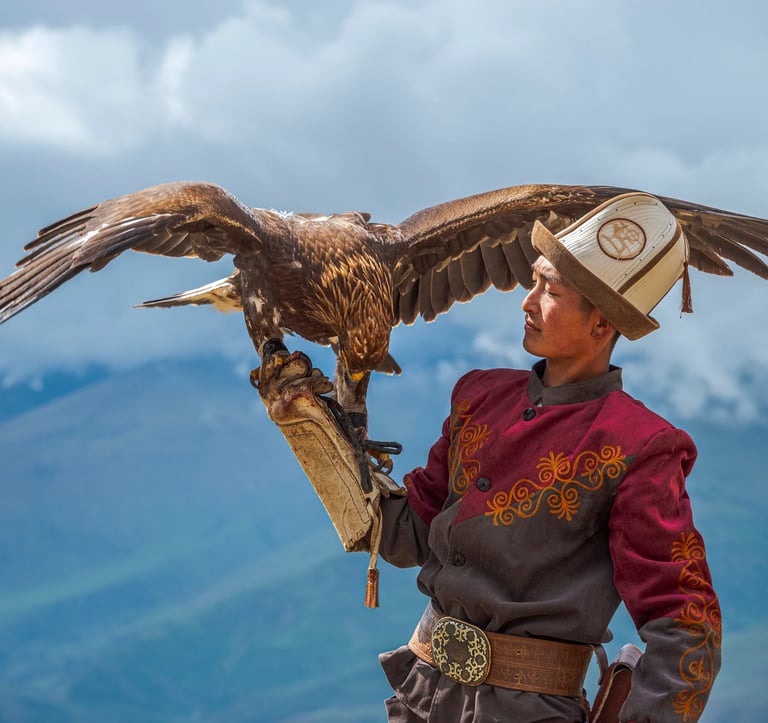

EAGLES
Kazakhstan is home to a rich population of бүркіт (golden eagles), which have played a significant role in the country's culture and traditions for centuries. The art of бүркітшілік (eagle hunting) is a deeply respected tradition among Kazakh nomads, who train these majestic birds for hunting small animals. The vast далалар (steppes) and таулар (mountains) of Kazakhstan provide the perfect habitat for these powerful raptors, allowing them to soar freely in search of prey. The ақиық бүркіт (royal eagle) is particularly revered for its strength, intelligence, and sharp vision. Many Kazakh hunters, known as бүркітшілер (eagle hunters), continue to pass down their skills through generations, ensuring that this ancient practice remains alive. The annual құсбегілік фестивалі (falconry festival) in Kazakhstan showcases traditional eagle hunting skills, attracting both locals and tourists. Conservation efforts are also in place to protect the wild populations of жыртқыш құстар (birds of prey), ensuring their survival in Kazakhstan’s natural ecosystems.


COSMODROME
Kazakhstan is home to the world-famous Байқоңыр ғарыш айлағы (Baikonur Cosmodrome), the oldest and largest operational space launch facility. Located in the vast Қызылорда облысы (Kyzylorda Region), this site has been central to global space exploration since the Soviet era. It was from here that the first human, Yuri Gagarin, was launched into space in 1961 aboard the Восток-1 ғарыш кемесі (Vostok-1 spacecraft). Today, the cosmodrome remains a key launch site for international missions, including those to the Халықаралық ғарыш станциясы (International Space Station). The facility includes multiple зымыран ұшыру алаңдары (rocket launch pads) and extensive infrastructure for space research and development. Tourists and space enthusiasts visit Baikonur to witness rocket launches and explore the ғарыш музейі (space museum), which showcases the history of spaceflight. The ғарыш саласы (space industry) in Kazakhstan continues to grow, with ongoing efforts to develop new projects and enhance the country’s space capabilities.


CHAK CHAK
Шәк-шәк (chak-chak) is a beloved traditional sweet in Kazakhstan, especially popular in Tatar and Bashkir cuisine. This dessert is made from қамыр (dough) that is cut into small pieces, fried until golden, and then coated with бал (honey), creating a deliciously crunchy and sticky treat. Often shaped into a pyramid or mound, шәк-шәк is served at special occasions such as weddings, celebrations, and family gatherings. Many Kazakhs enjoy pairing it with шай (tea), as the sweetness balances well with the strong flavor of traditional Kazakh tea. The preparation of шәк-шәк дайындау (chak-chak making) is considered an important culinary tradition, often passed down through generations. Some variations include adding жаңғақтар (nuts) or кептірілген жемістер (dried fruits) for extra flavor and texture. The dessert holds cultural significance as a symbol of hospitality and generosity, with hosts often offering шәк-шәк to guests as a welcoming gesture. Although originally from the Volga-Ural region, this dish has become an integral part of Kazakh cuisine, enjoyed across the country.


YURT
The киіз үй (yurt) is a traditional portable dwelling of the Kazakh people, perfectly suited for the nomadic lifestyle of the дала (steppe). Made from a wooden кереге (lattice frame) covered with thick киіз (felt), the yurt provides excellent insulation, keeping the interior warm in winter and cool in summer. At the center of the structure is the шаңырақ (circular roof opening), which serves as a symbol of family and heritage in Kazakh culture. The уықтар (wooden poles) extend from the frame to the шаңырақ, giving the yurt its iconic dome shape. Inside, the төсек орын (bedding area) and дастархан (dining space) are arranged according to tradition, reflecting the hospitality of the Kazakh people. The yurt is easily assembled and dismantled, allowing nomadic families to move across the vast жайлау (summer pastures). Even today, the киіз үй мәдениеті (yurt culture) remains an important part of Kazakh identity, often used during national celebrations and festivals. Modern versions of yurts can be found in tourism and cultural events, preserving the heritage of көшпенділердің өмір салты (nomadic lifestyle).


NUCLEAR TESTS
Kazakhstan has a significant history related to ядролық сынақтар (nuclear tests), as it was home to the Семей полигоны (Semipalatinsk Test Site), one of the largest Soviet nuclear testing grounds. From 1949 to 1989, hundreds of ядролық жарылыстар (nuclear explosions) were conducted in this region, causing severe environmental and health consequences. The people living near the сынақ алаңы (test site) suffered from radiation exposure, leading to long-term illnesses and genetic disorders. The effects of радиациялық ластану (radiation contamination) are still felt today, with many communities facing ongoing health challenges. In 1991, after gaining independence, Kazakhstan made a historic decision to close the Semipalatinsk site, becoming a leader in ядролық қарусыздану (nuclear disarmament). The country voluntarily gave up its ядролық арсенал (nuclear arsenal), the fourth-largest in the world at the time, setting an example for global peace efforts. Today, Kazakhstan actively promotes ядролық қауіпсіздік (nuclear security) and works with international organizations to prevent nuclear proliferation.


KUMIS
Қымыз (kumis) is a traditional Kazakh drink made from fermented бие сүті (mare’s milk). It has been an essential part of the көшпенді мәдениеті (nomadic culture) for centuries, valued for its nutritional and medicinal properties. The preparation process involves fermenting fresh mare’s milk in a саба (leather container) or a торсық (wooden or leather vessel), where natural bacteria transform the milk into a slightly alcoholic, fizzy drink. Rich in дәрумендер (vitamins) and пайдалы бактериялар (beneficial bacteria), kumis is known to boost the immune system and aid digestion. Traditionally, Kazakh families would drink kumis during the summer months on the жайлау (summer pastures), where horses roam freely. The taste of қышқылтым қымыз (slightly sour kumis) varies depending on the fermentation period, with some preferring a stronger, more fermented flavor. Kumis plays a central role in Kazakh hospitality, often offered to guests as a symbol of respect and friendship. Today, it remains a cherished part of ұлттық тағамдар (national cuisine), enjoyed at festivals and family gatherings.
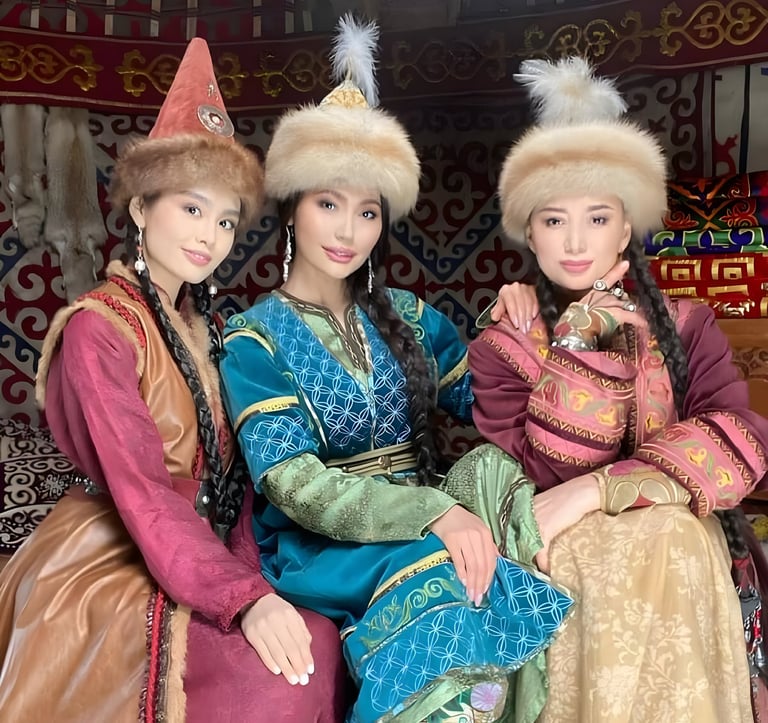

ALPHABET TRANSITION
Kazakhstan is undergoing a significant алфавит реформасы (alphabet reform), transitioning from the кирилл әліпбиі (Cyrillic alphabet) to the латын әліпбиі (Latin alphabet). This change aims to modernize the Kazakh language, improve international communication, and align with global technological advancements. The adoption of жаңа әліпби (new alphabet) is expected to enhance digital accessibility and simplify spelling rules, making it easier for future generations to learn and use Kazakh. The transition also reflects Kazakhstan’s efforts to strengthen its тілдік тәуелсіздік (linguistic independence), as the Cyrillic script was introduced during the Soviet period. Educational institutions, media, and public services are gradually adapting to the new script, ensuring a smooth shift for citizens. The reform is seen as part of a broader effort to modernize national identity while preserving мәдени мұра (cultural heritage).

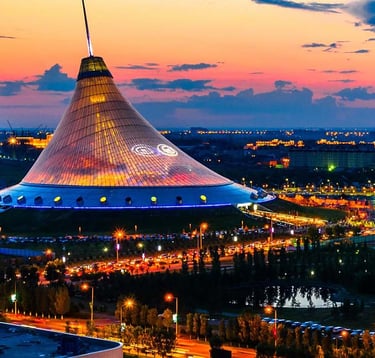
ASTANA
Астана (Astana), the capital of Kazakhstan, is a modern and rapidly developing city that represents the country’s progress and ambition. Located in the northern орталық аймақ (central region), Astana became the capital in 1997, replacing Алматы (Almaty). Since then, it has transformed into a hub of political, economic, and cultural activity. The city is known for its futuristic сәулет өнері (architecture), featuring iconic landmarks such as Бәйтерек монументі (Bayterek Monument), which symbolizes Kazakhstan’s independence and bright future. Another remarkable structure is the Хан Шатыр (Khan Shatyr), a giant tent-like shopping and entertainment center. Astana is also home to the Ақорда резиденциясы (Akorda Residence), the official residence of the President of Kazakhstan. The city hosts major international events, including forums and summits, reinforcing its role as a global дипломатиялық орталық (diplomatic center). Astana experiences extreme континенттік климат (continental climate), with cold winters and warm summers.


HORSES
Horses have played a crucial role in Kazakh history and remain an integral part of қазақ мәдениеті (Kazakh culture). For centuries, the Kazakh people have relied on жылқылар (horses) for transportation, warfare, and daily life. The vast далалар (steppes) of Kazakhstan provide the perfect environment for breeding strong and resilient horses. Among the most famous breeds is the қазақы жылқысы (Kazakh horse), known for its endurance and ability to withstand extreme weather conditions. Horses are deeply connected to the көшпенді өмір салты (nomadic lifestyle), allowing Kazakh ancestors to travel long distances and herd livestock efficiently. The tradition of ат спорты (equestrian sports) remains strong, with popular competitions such as көкпар (kokpar), a dynamic horseback game that showcases the riders’ skill and strength. Horses also play a vital role in Kazakh cuisine, with қымыз (kumis), a fermented mare’s milk, being a cherished traditional drink. Additionally, жылқы шаруашылығы (horse breeding) continues to be an important sector in Kazakhstan’s agriculture.


EXPAND YOUR KNOWLEDGE
If you are serious about learning Kazakh, we recommend that you download the Complete Kazakh Master Course.
You will receive all the information available on the website in a convenient portable digital format as well as additional contents: over 15.000 Vocabulary Words and Useful Phrases, in-depth explanations and exercises for all Grammar Rules, exclusive articles with Cultural Insights that you won't find in any other textbook so you can amaze your Kazakh friends thanks to your knowledge of their country and history.
With a one-time purchase you will also get hours of Podcasts to Practice your Kazakh listening skills as well as Dialogues with Exercises to achieve your own Master Certificate.
Start speaking Kazakh today!
